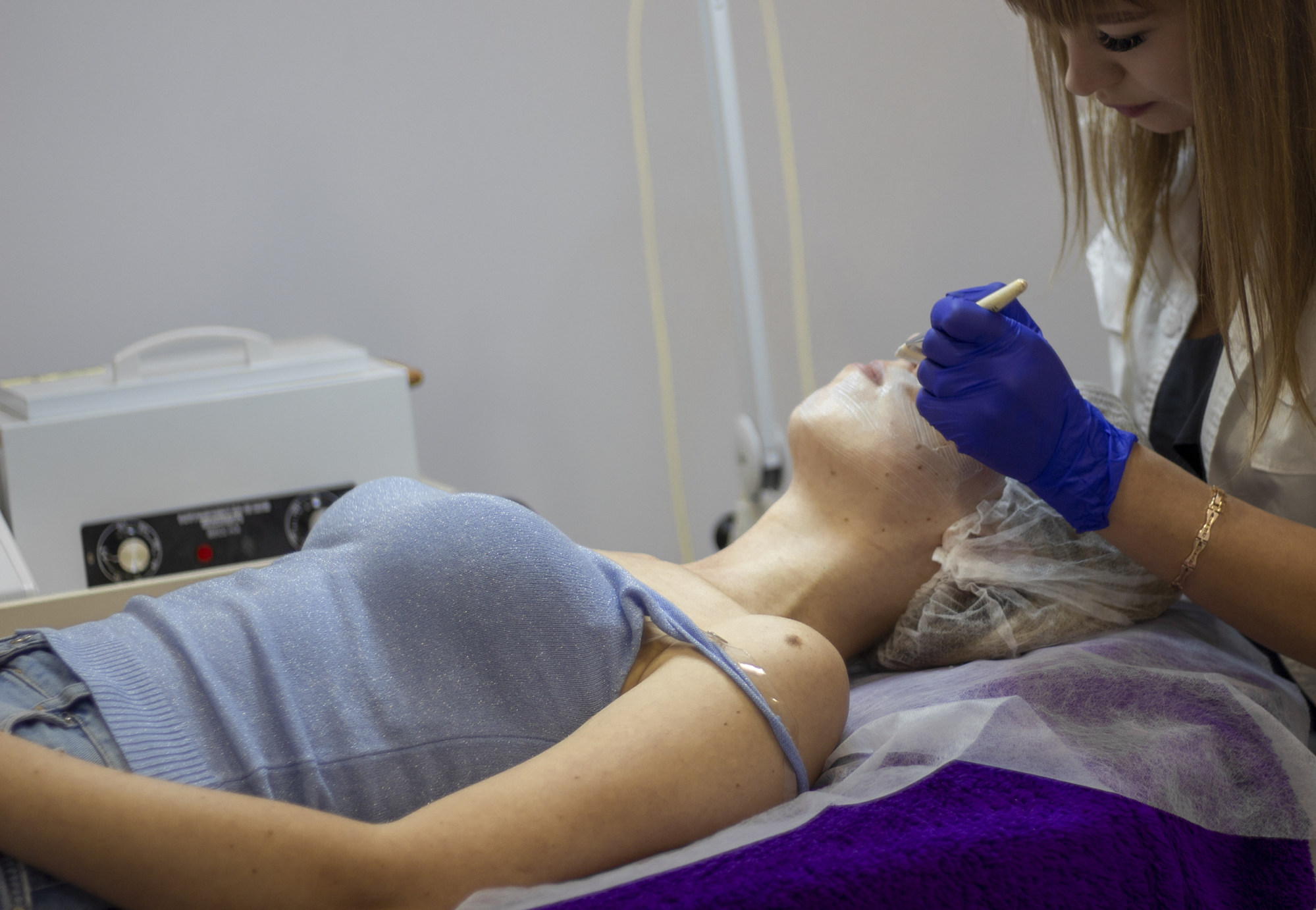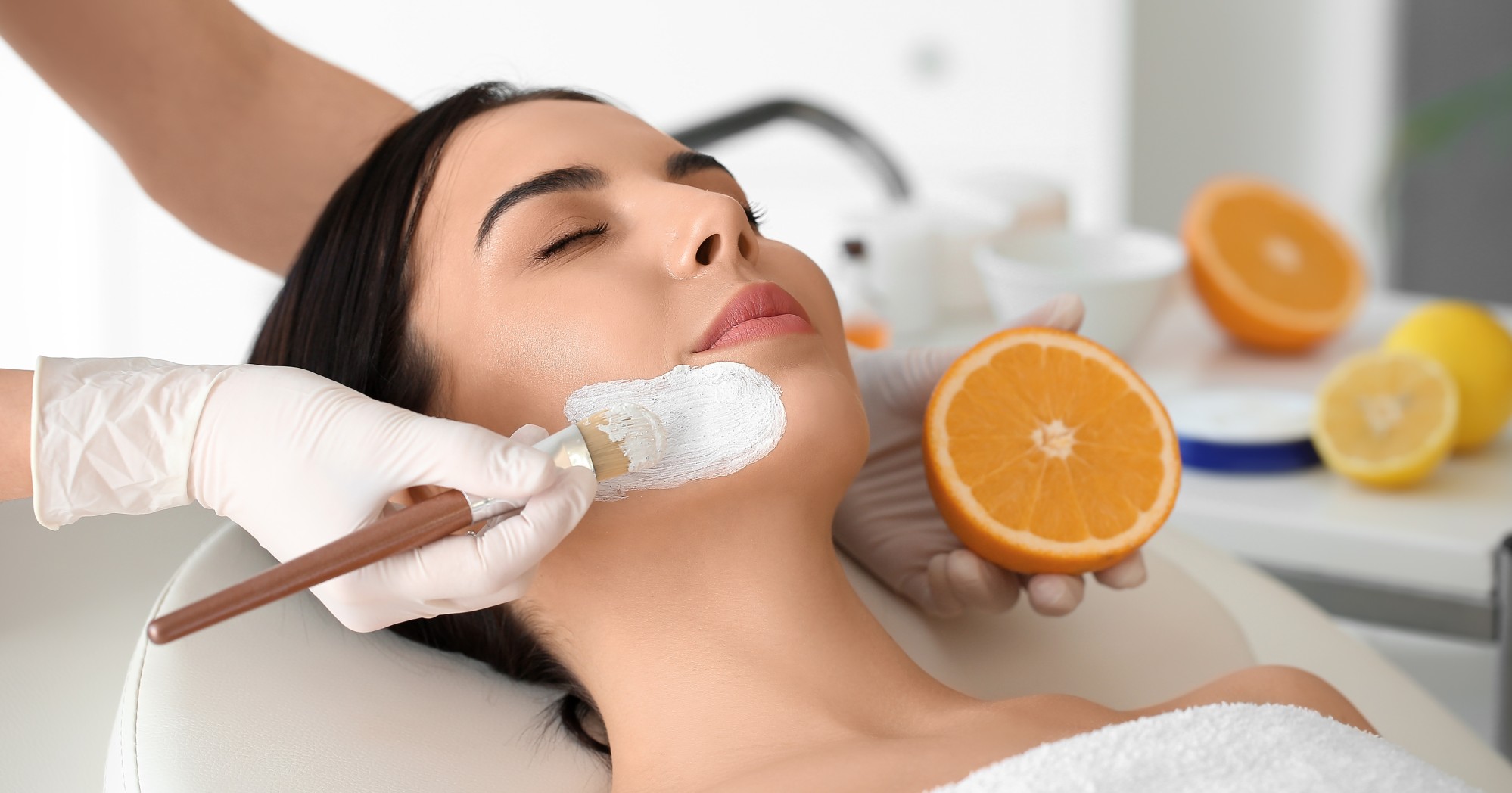
5 beauty treatments to repair sun-damaged skin, from microneedling to cryotherapy
- Microneedling, Fraxel laser, cryotherapy, chemical peels and topical solutions are treatments that can help former sun lovers now seeing the negative results
- Keeping up with preventive measures along with the treatments is key – all the experts interviewed were adamant about staying out of the sun from 10am to 4pm
Y2K fashion may be having its moment, but one trend from the era is unlikely to make a comeback: sun damage.
Two decades have passed since being bronzed was in vogue and people reached for oils to maximise their tans.
The damaging effects of sun exposure are now common knowledge and we’re familiar with warnings to stay out of the midday sun and wear sunscreen even when it’s cloudy out.
That’s increasingly being reflected in beauty: more skincare and make-up products include sun protection, including items like scalp sprays and lip balms with SPF.

But for former sun lovers who spent years bathing on beaches only to be seeing the negative results now, what options are available to turn back the clock?
The good news is that technology has progressed in being able to reduce the appearance of overexposure to UV rays.
It may not be possible to completely reverse the visible signs of too much time in the sun, but those on the hunt for treatments now have plenty to choose from. Here are some of the most common.
1. Microdermabrasion
Microdermabrasion, or microneedling, has become one of the most popular types of skincare procedures in recent years.
The technique uses small abrasive instruments made out of stainless steel or diamond tips to penetrate pores and cause microscopic damage to remove dead skin cells and encourage the production of natural collagen within days, dermatologist Dr Alpana Mohta says.
This is an aesthetic treatment, so while it won’t be able to target deep wrinkles or scarring, it can help to rejuvenate skin and achieve an overall smoother appearance.
Microdermabrasion can be done on the face, neck, chest, back and hands. Sessions last between 30 and 60 minutes and involve a trained practitioner moving across the selected area with a specialised device that removes dead skin cells and vacuums them away.
Following the treatment, the patient’s skin will be red and slightly swollen but side effects shouldn’t last more than a day or two.
The main appeal of this treatment is how natural the results are: unlike Botox or fillers, which can completely change a person’s face shape, microdermabrasion forces skin to renew itself. It restores what you already have naturally, giving skin a healthy glow.
2. Fraxel
Fraxel is a laser treatment approved by the US Food and Drug Administration that is used to treat a number of different skin issues, but is especially effective in treating sun damage and hyperpigmentation.
“Fraxel can help reduce the appearance of fine lines and wrinkles, as well as improve skin texture, tone and radiance,” says Fraxel specialist Dr Cameron Rokhsar.
The non-invasive, microscopic laser works to stimulate the production of new collagen and elastin, both of which are known for being the building blocks of healthy, youthful skin.

There are different types of Fraxel lasers, each designed to address specific skin concerns, Rokhsar says.
For sun damage, the Fraxel Re:store laser is often the most effective option. It is non-ablative, meaning it leaves most of the skin’s surface intact while still treating sun damage and early signs of ageing, such as fine lines around the eyes.
For more advanced signs of sun damage, Rokhsar recommends the Fraxel Dual laser, which has two settings: one for superficial treatment and another for skin texture, deep lines and acne scars.
For more severe pigmentation issues and deeper wrinkles, the dual laser can combine the two wavelengths to penetrate further into the skin and work more effectively.
3. Cryotherapy
Cryotherapy, or “cold therapy”, has long been championed by athletes for its internal benefits and ability to heal muscles and aid in recovery.
For sun-damaged skin, a freezing agent, usually liquid nitrogen, is used to remove surface-level skin.
Liquid nitrogen is applied with a spray gun to treat the superficial epidermal area on the affected skin, with patients seeing an 80-99 per cent success rate in the removal of sun spots and skin tags.
While the actual procedure lasts only a couple of minutes (a few seconds for the application and a couple of minutes for the skin to thaw), the healing process is longer, usually lasting between seven and 10 days.
It is common for patients to experience redness and swelling, and depending on the severity of the sun damage, it may be necessary to repeat the process.
4. Chemical peels
Chemical peels are hydroxy acid formulations used to treat a number of skin issues such as fine lines, uneven skin tone and texture, scars, and acne.
They work by resurfacing and regenerating skin tissue to target various signs of sun-inflicted ageing.
While the results eventually provide a natural and subtle glow, it is important to note that the healing process can last up to a week.
Skin will be red and tender immediately after, with dryness and flaking on days three and four.
On average, the skin should be completely renewed and better than before by day seven.

These treatments can also be personalised depending on the severity of the sun damage.
Gentle resurfacing peels, for example, can be used on sensitive skin and along with treating sun damage they also reduce lines, dark circles, enlarged pores, adult acne, rosacea and melasma.
Metabolic peels use a combination of hydroxy acids and vitamin A to exfoliate and renew surface cells while rebuilding the skin at the cellular level. By stimulating the skin’s natural turnover, metabolic peels work from the inside out without harming the skin.
Top facialist Mariam Abbas recommends consulting a specialist and combining peels with other treatments, such as microneedling and LED therapy specific to your problem areas, for optimal results.
5. Topical solutions
There are also effective options that can be incorporated into daily skincare routines to help reduce the signs of sun damage.
Rokhsar recommends topical treatments such as retinoids and vitamin C to help lighten dark spots, improve skin texture, and reduce fine lines and wrinkles.
These can be used on their own or along with microdermabrasion, peels or any laser therapy – but be wary of doing too much and making the problem worse.

Keeping up with preventive measures along with the above treatments is key. Most skin cancers are caused by overexposure to ultraviolet light, and all of the dermatologists interviewed were adamant about staying out of the sun from 10am to 4pm, when the sun’s rays are at their strongest.
Keep in mind that UV radiation can still penetrate clouds and cause skin damage. Apply sunscreen at least 15-30 minutes before leaving the house, and reapply it every two hours for all-round protection.
“It’s best to avoid prolonged exposure to the sun,” Rokhsar says. “It’s also essential to seek shade, wear protective clothing and use a broad-spectrum sunscreen with a sun protection factor [SPF] of 30 or higher.”

